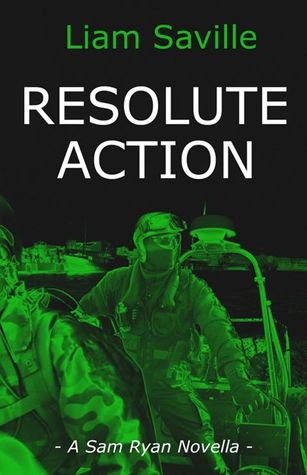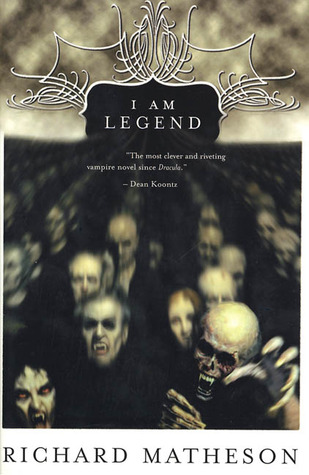Martin Roy Hill's Blog, page 10
September 28, 2013
DeMille's "Night Fall" a Thought-Provoking Look at TWA Tragedy
I’ve never been part of the TWA 800 conspiracy crowd, but after reading Night Fall, author Nelson DeMille’s fictional though well-researched account of the disaster, I can’t help developing my own doubts about the government’s findings.
It’s 2001, five years after the airliner’s lost. DeMille’s wise-cracking New York cop turned FBI anti-terrorist contract agent, John Corey, tries to reopen the investigation into the tragedy at the urging of his FBI agent wife, Kate Mayfield, who worked on the crash investigation. Like many of those who worked on the case, Kate was never satisfied with the government’s conclusion. There were, after all, more than 200 eye witnesses who swore they saw a missile streak toward the aircraft just before it exploded.
Corey pursues a rumor that an adulterous couple videotaping their beach side love-making may have captured moment of the explosion. FBI agents have been warned to not pursue any more leads in the cause of the disaster, but Corey is not known for following orders. The bureaucratic hornet’s nest stirred up by his quest raises the specter of a massive, criminal cover-up. As he draws closer to finding the couple who made the videotape, it becomes obvious Corey has few people he can trust in federal law enforcement, so he turns to his NYPD buddies for help. Night Fall builds to a taut and ultimately heart-wrenching conclusion.
In writing Night Fall, DeMille had to walk an emotional tight rope. A lesser writer might have sensationalized this story. Instead, DeMille developed a plot line that stayed as close to the actual facts as possible, while still developing a story rich in tension, humor, and heartbreak. You will be thinking about this novel long after you finish reading it.
September 17, 2013
"The Report on UFOs" a Most Unusual Book
Originally published in 1956 by the former director of Project Bluebook, the U.S. Air Force’s controversial investigation into Unidentified Flying Objects (UFO), the first seventeen chapters make the case that the Air Force too easily dismissed UFO reports and that many sightings could not be so easily debunked. The last three chapters, written four years later for a second printing, then dismisses the UFO phenomena as little more than popular myth.
The author, Edward J. Ruppelt, was a decorated WWII bombardier who was recalled to active duty during the Korean War. Attached to Air Force technical intelligence, he was assigned to Project Grudge, a predecessor to Bluebook. He took over the “You-Fo” desk when the Air Force was forced to pay better attention to the phenomena. During his time as Bluebook director, Ruppelt said he was frustrated that the Air Force publicly dismissed most UFO sightings as weather balloons, misidentified aircraft or clouds, or hoaxes while behind closed doors there was serious concern that the UFOs might actually be interplanetary spacecraft.
As much as 20 percent of UFO sightings remained “unknown” during Ruppelt’s time on Bluebook, and some had incredible evidence. More than once military jets engaged in high speed dogfights with UFOs, twisting and turning through the sky (weather balloons can’t maneuver). Ruppelt led many well-known scientists in research projects into the phenomena. One study looking at UFO maneuvers determined the craft were intelligently controlled – by whom they couldn’t determine – but no high-ranking Air Force officer would sign his name to the report, so it never saw daylight. Ruppelt also criticized the news media for being too eager to accept Air Force explanations for sightings.
Ruppelt never made a claim as to what the “unknown” sightings were or if they were manned by aliens from another planet. He concluded the first edition by saying “only time will tell” what the answer is.
Four years later, however, he added three more chapters to the book that appeared to take a less open-minded view. Whereas in the earlier chapters, Ruppelt championed “trained observers” – military and commercial pilots, radar operators, and scientists – who came forward to report UFO sightings, in the later chapters he dismissed the idea that such people should be called trained observers. Ruppelt essentially concluded that all UFO sightings could be identified, using as an example a sighting of his own—which he never mentioned in the first edition of the book. In conclusion, Ruppelt dismisses UFOs as a “Space Age Myth.”
What makes this book even more unusual is that the second edition, published in 1960, retained the 1956 publication date and copyright, as if trying to make readers think the last three chapters were always part of the book (even though Ruppelt admits in Chapter 18 that four years have passed.) Ufologists suggest Ruppelt was forced by the Air Force to add the last three chapters, but we will never know because shortly after the 1960 publication Ruppelt was dead of a heart attack at age 37.
You couldn’t find a better plot twist than that on an episode of The X-files.
September 12, 2013
Realistic Action in "Resolute Action"
 Royal Australian Navy special operations diver Nathan
Royal Australian Navy special operations diver Nathan
MacDonald, moonlighting as a nightclub bouncer, is viciously gunned down by a
biker gang in Sidney’s Kings Cross. Since the biker gang is involved in the
drug trade, the local police assume MacDonald was also peddling drugs.
Australian Army Captain Sam Ryan, however, finds it hard to believe that a
member of Australia’s equivalent of a U.S. Navy SEAL team would be involved
with drug dealing.
Ryan, an investigator with the Australian Defense Force
Investigative Service, begins a parallel investigation into MacDonald’s death
which leads to the discovery of a packet of evidence the sailor had collected
against two Navy officers he suspected of being involved in the smuggling of
Indonesian refugees. Ryan’s probe takes him uncover, first aboard a Navy patrol
boat in the middle of smuggling waters, then to Indonesia to hunt down the
former Indonesian army officer who ordered MacDonald’s murder.
I was a great fan of author Liam Saville’s first Sam Ryan
novella, Predator Strike! I am no less enthused about Resolute Action. Saville,
a former Australian Army officer and police officer, brings great realism to
his mystery work. His writing style is straightforward and accessible, á la
Dasheill Hammet. Sam Ryan is a true military officer, dedicated to his work and
to Australia’s service members. He also believes in justice, even when it can’t
be obtained in the normal way. Likable and approachable, Ryan also harbors a
sharp edge which sometimes makes him step over the line to get the job done.
Anyone who is a fan of Nelson Demille’s Army investigator
Paul Brenner series will enjoy Resolute Action.
September 2, 2013
"Stonehenge Legacy" Offers Chilling Suspense
 A week before the summer solstice, Nathan Chase, a world renowned
A week before the summer solstice, Nathan Chase, a world renowned
treasure hunter, kills himself and leaves a cryptic letter for his estranged
son, archeologist Gideon Chase. Within hours Gideon discovers his father was
involved with a 5,000-year-old “Brotherhood” that worships the sacred
Stonehenge stones, which they believe provide worshippers with miraculous
health and fortune. In return, the Brotherhood repays the sacred stones with
human sacrifices. Soon Gideon must decide whether his destiny involves
membership in the Brotherhood or its destruction.
Author Sam Christer has created a truly believable and
frightening suspense thriller. The world of the Brotherhood is created with
such realistic detail it sent me to Google to see if such a cult ever did
exist. (I couldn’t find one.) His characters, especially Gideon, are fully
developed. The suspense builds to a tense ending, but the final climax is a
bit confusing. I also found the present tense narrative jarring at times, but I
view that as more a personal preference than a criticism of Christer’s writing.
All in all, The Stonehenge Legacy is an enjoyable read.
August 18, 2013
"No Mercy" a Delightful Romp Through Mayhem
 I’ve wanted to check out Wendy Cartmell’s Sergeant Major
I’ve wanted to check out Wendy Cartmell’s Sergeant Major
Crane mystery series for some time. After all, we both write about military
criminal investigators. Wendy’s is an investigator for the British Army’s
Special Investigative Branch, the English version of the U.S. Army’s Criminal
Investigative Division. My protagonist is a special agent for the U.S. Naval
Criminal Investigative Service. So when Wendy sent me a tweet asking me to
check out her book No Mercy, I jumped at it.
No Mercy is a collection of short stories, including the
Sergeant Major Crane story that gives the book its title. It also includes
samples of several of Wendy’s Crane novels. Wendy writes with a clear pen and a
sharp eye for detail, both for police procedure and military life (the latter
she learned as the wife of a career soldier). She has a wicked wit for devising
plots, especially plot in which some deserving soul gets his just reward. God
help you if you’re an abusive husband!
No Mercy is a delightful romp through murder and mayhem, and
a great introduction to Sergeant Major Crane. As we say in the naval service,
Bravo Zulu, Wendy Cartmell.
August 10, 2013
Loyalty and Betrayal in Higgins' "Eagle Has Landed"
This is the premise of what is probably author Jack Higgins’ best known thriller, The Eagle Has Landed. The plot of this 1975 best-selling novel is probably well-known, if not because you’ve read it, then because you’ve seen the 1976 movie with Michael Caine and Donald Sutherland. A group of German paratroopers drop into English country village of Studley Constable disguised as Polish soldiers in order to capture, or kill, Churchill while he relaxes at a nearby country estate. The plot goes awry when a German soldier dies while trying to rescue a small girl who has fallen into a stream. Pulled from the water, the local villagers discover the soldier is wearing his German Army uniform under his Polish uniform.
But that movie was a severely abridged version of Higgins’ story of wartime loyalties and betrayals. In the novel, Higgins takes time to fully develop his characters. There are few ranting Nazis in this book. The German paratroopers are simply good, brave soldiers performing their duty, and ferociously loyal to their commander, Lieutenant Colonel Kurt Steiner, a weary combat veteran who despises the Nazis. In fact, the only Nazi zealot among them is a treasonous Englishman, a member of the SS British Free Corps – a pro-Nazi cadre of turncoats – whom the SS forced the paratroopers to bring with them.
Higgins is best in his development of Liam Devlin, the Irish Republican Army member with a poet’s heart, who assists Steiner and his men. Despite his life of violence, Liam finds himself falling in love with a much younger, innocent English girl, a situation which exposes the killer’s humanity and vulnerabilities. You can’t help but root for Liam at the end of the book.
And when he reaches that end, Higgins asks the question that must be asked after every battle and after every war: Was it all worth it? You need to read the book to discover Higgins’ answer.
July 27, 2013
DeMille's "General's Daughter" Still Timely
 I've watched the movie based on Nelson DeMille’s The General's Daughter many times, but until recently I never had the chance to read it. I was eager to do so, since I am the author of a mystery novel also involving with a military criminal investigator and some of the same themes DeMille covers in this mystery novel.
I've watched the movie based on Nelson DeMille’s The General's Daughter many times, but until recently I never had the chance to read it. I was eager to do so, since I am the author of a mystery novel also involving with a military criminal investigator and some of the same themes DeMille covers in this mystery novel.In The General’s Daughter, Paul Brenner, an investigator with the U.S. Army Criminal Investigation Division, is working undercover at a fictitious Army base in Georgia when he is drawn into a case involving the murder of a female Army captain. The case is highly sensitive for two reasons: the victim was found on post naked and staked spread eagle to the ground, an apparent rape victim; the victim, Ann Campbell, is also the rising-star daughter of the fort’s commanding general, a hero of the first Gulf War with political ambitions.
DeMille blends a hard-boiled narration with a police procedural as he takes the reader deep into the lives of the officers who served alongside Captain Campbell. Brenner, a sardonic Vietnam veteran who is nearing the end of his Army career, is teamed with Cynthia Sunhill, a younger, idealistic rape investigator with whom he once had an affair. Together they dig beneath the starched and pressed Dress Green uniforms of the fort’s officer corps to undercover a not-too-well-hidden seediness that threatens to destroy dozens of careers, including the general’s. They also discover that Captain Campbell was as much predator as victim.
DeMille, himself a former Army officer and Vietnam veteran, explores many themes in this book. Officers are expected to live up to a high standard of honor, but in The General’s Daughter he shows that many fail in doing so. Written in 1992, not long after the military integrated the sexes, he explores an Army trying to cope with the still new concept of men and women serving side-by-side. Twenty years later, as the Pentagon deals with sex scandals at the military academies, on the battlefield, and among some of its highest ranking officers, the questions explored in this book are still looking for answers.
July 26, 2013
ELDORADO a Sober, Realistic Look at Our Future
 In
In
post Peak-Oil Vancouver, Canada, the future is not bright. The end of the
Petroleum Age means the luxuries we’ve come to enjoy – automobiles, computers, and
e-readers – have been left in the distant past. Suburban communities like
Surrey have been largely abandoned, and Vancouver itself is becoming a human
wasteland of joblessness and homelessness. This is the stage set for author Jay
Allan Storey’s new dystopian novel, Eldorado.
The
novel’s protagonist, Richard Hampton, is one of the few Vancouver residents
with some semblance of a normal life. A college professor, he still has a house
which he shares with his younger, troubled teenage brother, Danny. But when
Danny disappears, the local police are unable to search for the missing youth,
and Richard is forced to give up his comfort and set out to find his brother.
Richard’s
journey takes him through the decaying remains of a civilization that was built
on cheap oil, and destroyed itself by not heeding the warnings about dwindling
oil supplies. The world Storey creates is no Mad Max look at the future, but a
sobering, realistic view of what might lie ahead of us.
Those lucky enough to have homes must turn to subsistence
farming to survive. Fuel and electricity are rationed by the government. There
are few automobiles, and those are owned only by the wealthiest citizens.
Bicycles and the occasional antiquated electric street car are the main modes
of transport; even the police are restricted to patrolling on small, under-powered
motorcycles called “mosquitoes” due to the high-pitch whine of their engines.
Criminal gangs and right-wing militias (who still don’t
believe the Oil Age has ended) make the abandoned suburbs where Richard must
search a No-Mans-Land. Beyond the setting of Vancouver, wars are being fought
for whatever natural resources remain, but without oil the great armies of the
United States and China have become little more than 19th century
horse-drawn throw-backs.
Eldorado is an
engaging and thrilling adventure, while also being a serious and thought
provoking warning about the future that lies ahead.
July 6, 2013
Matheson's Legendary "I Am Legend"
 I read Richard Matheson’s I Am
I read Richard Matheson’s I Am
Legend back in – well, I think it was high school. Over the decades, I have
seen at least two of the three movies based on this book, including the most
recent movie starring Will Smith. Other than the movie adaptions, the only
details I remembered about the book was the thought I had as I finished the
last chapter: “That was a damn fine novel.”
Published in 1954, Legend is the
story of Robert Neville who, for some reason, has survived an epidemic that
turns humans into either living or dead vampires. Alone, he struggles to
survive, haunting the streets of a post-nuclear conflict Los Angeles by day,
and seeking refuge in his fortified home by night from the undead who demand
his death. Despite the opposition being vampires, Legend is considered the
granddaddy of the zombie genre.
Legend, however, is more than an
horror story. It is an exploration of the psychology of a man who survives
years alone, not on a deserted island like Robinson Crusoe, but in the middle
of a major city that has become the domain of the night dwellers. Matheson, who
died within days of my starting this book in June 2013, always rejected the
label of horror writer. He simply used the genre he needed to tell the story he
wanted to tell stories about the human condition.
If all you’ve seen is the most
recent Hollywood version of this book, you know little of the book. In the end,
Neville comes to realize the infection has changed humanity – evolved humanity
– and that he is, like so many monsters from humanity’s past, has become a
legend to the new generation of people.
This is a sci-fi classic that will
live forever.
But that’s not the end of this book.
Because Legend is a relatively short novel, it also includes several short
stories, some of which were later adapted for TV sci-fi shows. The best, in my
opinion, were “Mad House,” in which a writer is destroyed by his uncontrollable
anger over his life's failures, and the riveting “The Shadow Dance,” in which a
medical doctor has to admit there is more to human illness than physical
science can explain.
A talent like Richard Matheson will
be missed.
June 23, 2013
DUTY named Best Short Story Collection by SDBAA
 This weekend, June 22, I had the honor of my book, DUTY: Suspense and Mystery Stories from the Cold War and Beyond, being named the 2012 Best Short Story Anthology/Collection by the San Diego Book Awards Association (SDBAA).The Killing Depths, my military mystery thriller, was also a finalist in the SDBAA Sisters In Crime Mystery Award category.Awards were presented to authors of published and unpublished books and short stories in 27 categories of fiction and nonfiction.The SDBAA was founded in 1994 by author Chet Cunningham. More information on SDBAA and this year's winners and finalists can be found at their website.
This weekend, June 22, I had the honor of my book, DUTY: Suspense and Mystery Stories from the Cold War and Beyond, being named the 2012 Best Short Story Anthology/Collection by the San Diego Book Awards Association (SDBAA).The Killing Depths, my military mystery thriller, was also a finalist in the SDBAA Sisters In Crime Mystery Award category.Awards were presented to authors of published and unpublished books and short stories in 27 categories of fiction and nonfiction.The SDBAA was founded in 1994 by author Chet Cunningham. More information on SDBAA and this year's winners and finalists can be found at their website.



